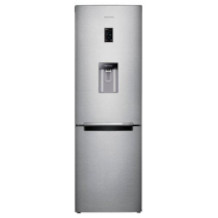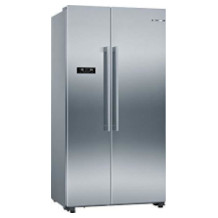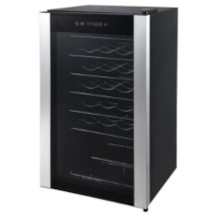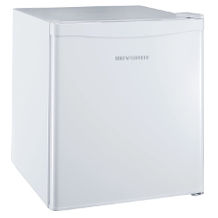Chest freezer purchasing advice: how to choose the right product
- What You Need to Know
- A chest freezer offers a lot of storage space.
- Such an appliance is economical and energy-efficient.
- Food is frozen in the freezer at minus 18 degrees Celsius.
- A chest freezer with no-frost function does not need to be defrosted.
- As little empty space as possible saves electricity.
The chest freezer – efficient and long-lasting storage
Chest freezers are spacious, rectangular chests that can store a large amount of frozen food. The free-standing chests open upwards. This saves energy because cold air sinks to the bottom. Although they are designed for continuous operation, chest freezers are characterised by low energy consumption. Appliances equipped with the so-called “no-frost function” do not ice up, which is why defrosting is not necessary. In everyday life, we encounter these freezers mainly in supermarkets or kiosks. Due to their size, they are rarely found in the kitchen in private households, but are usually located in the cellar or in a storage room.
Chest freezers are to be distinguished from freezers. The latter have a door like a refrigerator and are equipped with drawers. The frozen food can be easily sorted into these compartments. Depending on their height, freezers offer a lot of storage space, but fall short of most chest freezers. Anyone who wants to buy a large freezer should weigh up whether the capacity of the chest will really be used to the full.
In private use, chest freezers are often used by anglers or hunters to store and preserve larger pieces of meat or fish. Of course, the chest freezer is also suitable for storing large quantities of fruit, vegetables or frozen food. It makes sense to buy a freezer, especially for large families. The appliances are generally cheaper than freezers with a comparable useful capacity.
Sooner or later, a layer of ice forms on the inside walls of freezers. This additional layer increases electricity consumption, which is why the chest freezer has to be defrosted – unless it has a so-called “no-frost function”. Since ice does not form in these appliances, there is no need for this tedious work.
One disadvantage of chest freezers, apart from the large amount of space they take up, is that most models have no compartments or drawers. Since food is stored on top of each other in the chest, it is more difficult to keep things tidy. However, with simple organisation systems, chest freezers can be set up just as neatly as a freezer. However, dividers and storage baskets must be purchased separately for some models. The space above a chest freezer cannot be used because the flap of the chest opens upwards.
Pro points
- Storage space for many foods
- Low energy consumption
- Keeps food for a long time
- Hardly any ice build-up with no-frost function
- Cheaper than freezers
Drawbacks
- Requires a lot of space
- Often without organisational elements
- Space above the chest freezer is not usable
How does a chest freezer work?
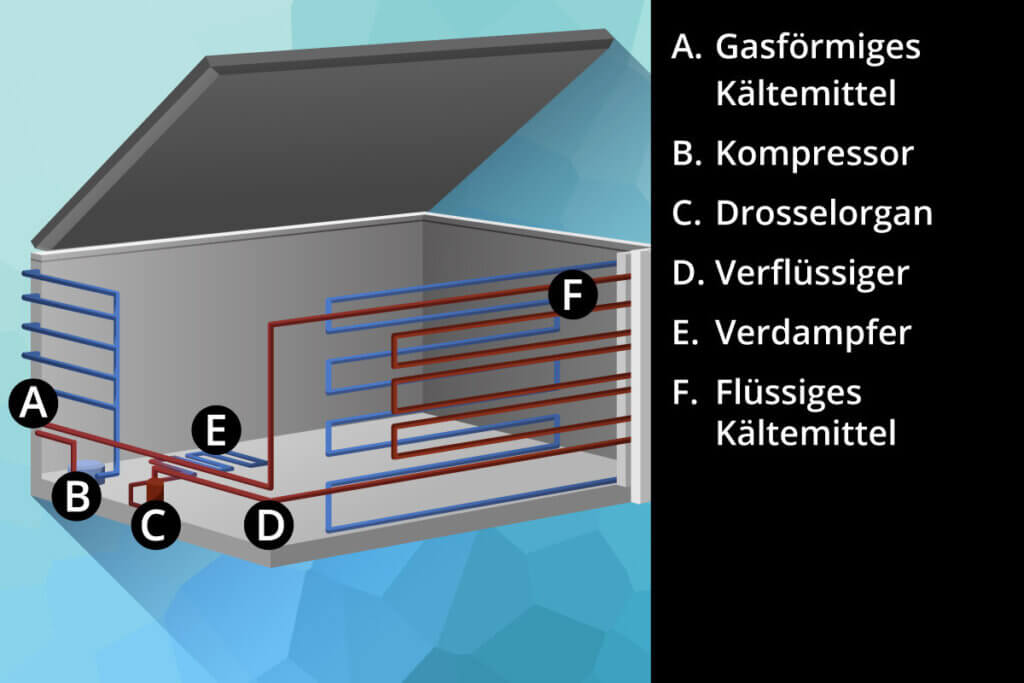
A chest freezer cools down its interior by the physical principle of heat of evaporation. A refrigerant flows in a closed circuit, changing its state between liquid and gaseous. In the bottom of the chest freezer sits a compressor (B), which is connected to the thermostat via a cable. This compressor is connected to a pipe system through which the refrigerant flows. The pipe system is divided into two coils, the condenser (D) and the evaporator (E). In chest freezers, the evaporator is foamed into the side walls and the bottom surface of the inner container. The condenser is built into the outer skin all around. The evaporator and condenser are connected via a throttle valve (C), a pipe with a very small diameter.
The following happens in this cooling circuit:
- In the evaporator (E), the liquid refrigerant absorbs heat and evaporates, thus becoming gaseous.
- The compressor (B) pumps the gaseous refrigerant (A) into the condenser (D), increasing the pressure of the refrigerant.
- In the condenser (D) the refrigerant releases the heat under high pressure and becomes liquid again.
- The liquid refrigerant (F) flows through the throttle valve (C) into the evaporator, where the pressure of the refrigerant is reduced again.
- The refrigeration cycle now starts again from the beginning.
- When the set temperature is reached, the thermostat switches off the compressor. Due to the insulation, the temperature in the chest is maintained for some time.
- If the temperature rises above a certain level, the compressor is switched on again.
What should I look for when buying a chest freezer?
The most important reason for buying a chest freezer is the desire to store large quantities of food for a long time. Buyers need to weigh up how large the stock to be stored should be and how much space is available for the chest. In second place are the technical details of the appliance. Important points here are the energy efficiency of the chest freezer and additional functions such as no-frost technology.
Energy consumption and energy efficiency
The so-called energy efficiency class is important from both an ecological and a financial point of view. This class provides information on the energy consumption of the freezer in comparison with a fictitious reference appliance. The appliance class and the useful capacity are also taken into account.
Chest freezers are available in classes A+ to A+++. A+++ is the most economical category. Manufacturers of electrical appliances in the EU are required to display an energy label on their appliances, which ranges from G to A. Nowadays, refrigerators must at least meet the conditions of class A+. If you want to save on electricity costs and protect the environment, opt for a model with the A+++ label. Even in category A, the differences in electricity consumption are considerable. An A++ appliance consumes around 25 percent less energy than an A+ appliance, and an A+++ chest freezer even 50 percent less.
A chest freezer needs to be well filled
A chest freezer is only energy-efficient if the space inside it is used to the full. As soon as the freezer is opened, warm ambient air enters the interior. More warm air can enter a rather empty appliance. If, on the other hand, the chest is well filled, less air will fit inside.
The energy consumption of the appliance depends not only on the energy efficiency class, but also on the age of the chest freezer, the size and the insulation. The location of the freezer should also not be neglected. In a cool place, it needs less energy to compensate for the difference between the ambient temperature and the desired interior temperature.
Climate class
Freezers and refrigerators are divided into so-called climate classes. These limit the optimum ambient temperature for the operation of the product. The climate classes also differ in their noise level. In a warm environment, the cooling circuit has to work harder, which is why the appliance is louder than in a cool place. The following climate classes exist:
| Climate class | Property |
|---|---|
| N (Normal) | Units in this class are designed for operating temperatures between 16 degrees and 32 degrees Celsius. This is the standard temperature range in residential buildings. |
| SN (Subnormal) | These units are designed for temperatures between 10 and 32 degrees Celsius and are suitable for unheated rooms such as garages and cellars. |
| T (Tropical) | Cooling units with this class can be used at temperatures between 16 degrees and 43 degrees Celsius. |
| ST (Subtropics) | This class is suitable for temperatures between 16 and 38 degrees Celsius. |
The classes T and ST are of little relevance for German-speaking countries. The climate class has a direct effect on the power consumption of the appliance. A class T appliance may consume 20 percent more electricity than a class N appliance.
Size and useful capacity
Make sure that the size of the appliance fits your needs. A half-full chest freezer consumes unnecessary electricity. The following criteria are important when choosing the right capacity:
- Size of household
- Eating habits
- Shopping habits
- Amount of food stored
- Storage options
If you only stock up now and then, you should plan on 50 to 80 litres per person. For long-term storage of larger quantities, 100 to 130 litres per person are recommended. There is a huge range of sizes for freezers, so everyone will find the right size. They range from around 30 litres to XXL chest freezers with a capacity of 350 litres and more.
Volume
The cooling circuit of a freezer produces noise that many find annoying. The compressor is primarily responsible for this. If the freezer is to be placed in a living room, special attention should be paid to the noise level. It is recommended that a volume of 38 decibels is not exceeded. By comparison, 40 to 60 decibels is considered a normal conversational volume. A lawn mower is in the 80 decibel range. The most comfortable for your hearing is a refrigerator that stays below 40 decibels. If the chest freezer is in the basement or in a garage, the volume does not matter too much.
Storage time in the event of a malfunction
In the event of a power failure, it is important to know how long the frozen food can remain in the chest freezer without any loss of quality. The storage time in the event of a malfunction indicates how long it takes for the freezer to warm up from minus 18 to minus 9 degrees Celsius when fully loaded. This time value can be found in the instructions for use. It is shorter for partial loads. However, a freezer should keep food frozen for at least 10 hours in the event of a malfunction. In chest freezers, this period is longer than in upright freezers; very good models offer the longest storage time, up to 64 hours. If a malfunction occurs, you should never open the chest freezer door to prevent the cold air from escaping.
Temperature
The temperature in the chest freezer is monitored and controlled by a temperature controller. This controller has a sensor that measures the temperature at the evaporator. The measured actual value is compared with the set target value. If the values differ, the cooling circuit is switched on or off. Depending on the model, the desired temperature can be selected by means of a rotary control, buttons or touch operation. The temperature in a freezer should be at least minus 18 degrees Celsius.
It can always happen that someone forgets to close the flap of the chest freezer properly again. If this were to go undetected, the freezer would defrost. The food would no longer be edible and the freezer would have to be cleaned. The temperature alarm warns of a rise in temperature by sounds and warning lights. It is advisable to choose an appliance with such an alarm.
Why minus 18 degrees?
In 1964, the International Cold Institute proposed the minimum temperature of 0 degrees Fahrenheit for frozen food. In Europe, this was rounded to minus 18 degrees Celsius. Since 1989, this minimum value has been prescribed by EU directives. At low temperatures, chemical processes slow down. Experts have found that storage at minus 18 to minus 30 degrees Celsius is optimal for fruit and vegetables.
Quick freeze function
The name of the function already reveals what it can do. It freezes food as quickly as possible. In this way, the cold chain can be maintained. If a lot of food is placed in the freezer, it takes a long time to freeze through. In the worst case, the interior heats up so much that other frozen food starts to thaw. This is where the fast freeze function, sometimes called the super freeze function, comes in handy. This practical function is also useful when drinks need to be cooled down particularly quickly at parties. It is important to determine whether the appliance automatically switches back to normal mode after a certain time or not. If this is not the case, it must be done manually. Otherwise, the freezer will consume more electricity over a longer period of time, which can be very annoying.
No-frost technology
No-frost technology reduces the formation of frost and ice to a minimum. It also prevents food from freezing together. The technology extracts moist air from the inside of the chest freezer so that no ice can form. This means that the appliance no longer needs to be defrosted by hand. The no-frost function also helps to save electricity. Ice on the inside walls of a refrigerator has an insulating effect. Icy appliances therefore consume more energy. Appliances with this feature are slightly more expensive to buy.
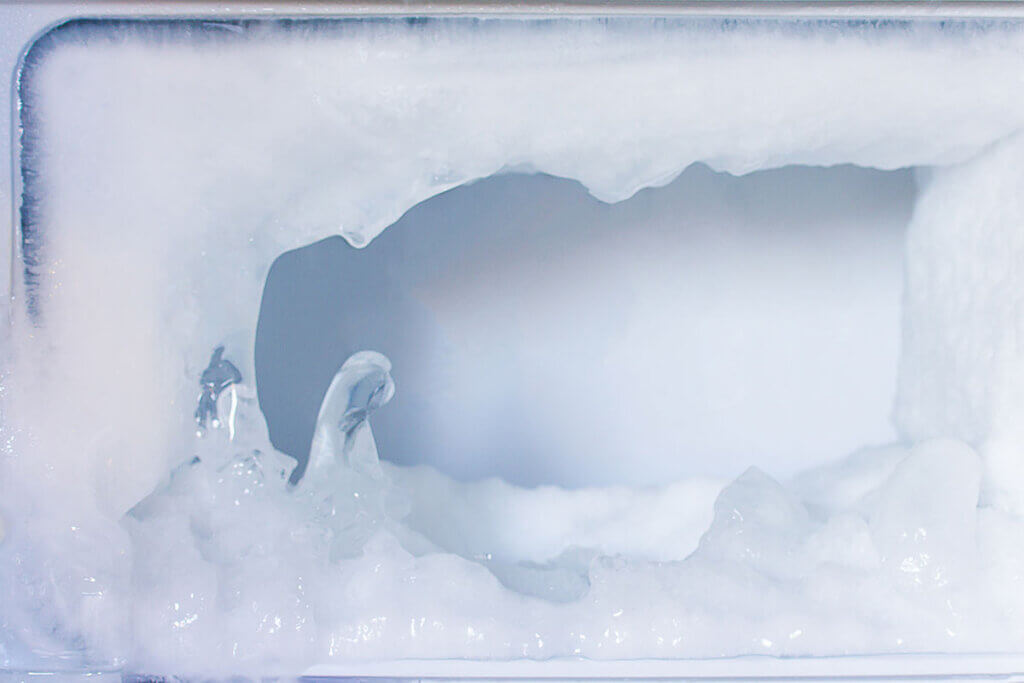
Child lock
A child lock is not designed to keep children out of the freezer. Rather, the fuse locks the settings of the chest freezer. A careless child could otherwise change them without intending to. This could result in increased electricity consumption or even defrosting of the freezer.
General tips for the chest freezer
If you take the right approach to freezing large quantities of food, you can save yourself work later on. It is a good idea to keep things tidy so that frozen food can be found again quickly. For this purpose, the frozen food should be well sorted and labelled. Some foods are less suitable for frozen storage and some are not suitable at all. If you have an overview of the frozen food and only freeze suitable food, you will not have to dispose of food later and thus waste it.
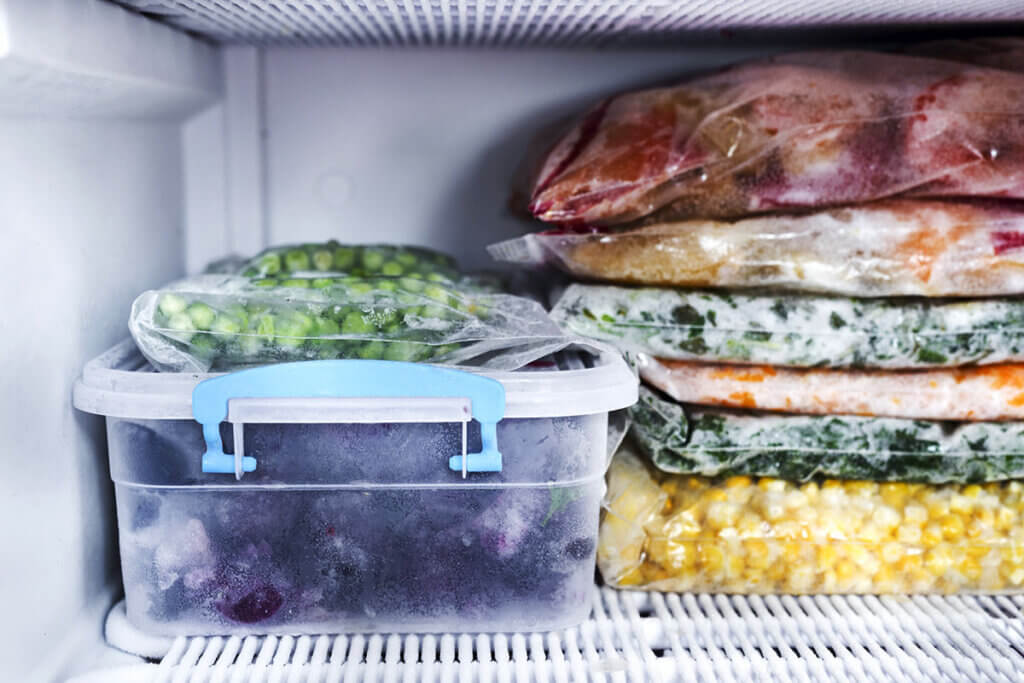
Putting away and sorting
Especially with a larger chest freezer, it can be difficult to keep track of everything. Properly organising the freezer not only makes it easier to find food, it also keeps electricity consumption down. If what you are looking for is found quickly, the lid of the freezer is not left open any longer than necessary. Forgotten frozen food overstores and becomes inedible. Keep your chest freezer tidy with these tips:
Store food that you need often within easy reach. Food that is to be frozen for a longer period of time, on the other hand, can be stored quietly at the bottom of the freezer.
Discard almost empty bags and superfluous packaging. Leftovers are transferred to smaller packaging instead. Plastic boxes should be suitable for the freezer. This can be recognised by the ice crystal symbol.
Sort similar foods into one container. So meat to meat, fish to fish and vegetables to vegetables. Labeled and coloured containers help you find the food you are looking for.
Label everything that is no longer in the packaging. This can be done with a felt-tip pen or with labels. In addition to the freezing date, the best-before date should also be noted.
Mistakes when freezing
It is often tempting to simply put leftovers or groceries in the chest freezer and not worry about further storage. Then, when thawing out, many a surprise can be experienced when the food has changed considerably both visually and in taste. It therefore makes sense to pay attention to a few details when freezing.
Do not freeze unsuitable foods: Water-rich fruits and vegetables, boiled and jacket potatoes, eggs and dairy products are better stored in the refrigerator.
Small portions freeze faster and defrost better. A large piece of meat is best cut up. It is also a good idea to cut vegetables into small pieces. Large portions often become mushy when defrosting.
Warm food should never be put in the chest freezer. It could defrost other food that is already frozen. Also, the appliance has to use a lot of energy to compensate for the heat. It is better to let food stand long enough to reach room temperature before freezing.
It is better not to freeze anything in its original packaging. Oxygen affects the taste of food. It is better to use tight plastic tins and freezer bags from which the air is forced out.
If too much air gets to the frozen food, freezer burn can occur. The surface of the affected food dries out and unsightly stains appear. With vegetables and poultry these are whitish, but with fish and beef they are grey-brown. Food with freezer burn suffers a loss of taste and is tough and leathery. However, there is no health risk. If only a few areas are affected by freezer burn, they can be cut off.
How long can frozen food be kept?
It is a widespread but false assumption that frozen food cannot spoil. Even at minus 18 degrees and colder, meat, fish and vegetables cannot be kept indefinitely. Especially in large chest freezers, you can sometimes find food that was frozen a long time ago but then forgotten about and is now no longer edible. With frozen food, you can rely on the best-before date. Otherwise, it is important to have the frozen food properly labelled. This is roughly how long certain foods will keep in the chest freezer:
Fruit and vegetables

Most varieties can be stored frozen for up to twelve months. However, it is not advisable to do this with every type of fruit and vegetable. Apples, bananas and plums turn brown and lose flavour. Vegetables with a high water content such as cucumbers, tomatoes and raw potatoes become mushy after thawing. Carrots, broccoli and asparagus should be blanched, i.e. cooked briefly, before freezing. Peas, beans and strawberries can be frozen easily and for a long time.
Meat

The fattier the meat, the shorter the shelf life. Lean minced meat can be kept for up to three months. Minced meat with a higher fat content should only be stored frozen for about a month. Poultry will keep for eight to ten months. Beef stays fresh for nine to twelve months. If dark spots have formed on the meat and it looks leathery, it is no longer edible. A rancid smell is noticeable during preparation at the latest.
Fish

Here, too, a high fat content means faster spoilage. Fresh fish should be frozen already gutted. To make it easier to store, it can be pre-frozen on a tray. After that, another trick is to freeze the fish. The fish is briefly immersed in cold water so that a layer of ice forms around it. The procedure can be repeated three to five times. This strengthens the icy protective layer. The fish is then packed in an airtight freezer bag and finally frozen.
Bread

Whether bread is frozen in slices or whole loaves makes no difference to the taste. Sliced bread is easier to store and defrosts more quickly. Bread can be stored in the chest freezer for up to three months. As a general rule, the fresher the bread is when it is frozen, the better it tastes after thawing.
Frozen food

Many ready-made meals are bought already frozen and are therefore ideally suited for freezing. The best-before date can be used as a guide. After this date, these foods are not necessarily bad. A frozen pizza can remain edible in the chest freezer for up to twelve months, and frozen chips for 18 months.
How do I defrost food properly?
As a general rule, frozen food is best defrosted in the refrigerator. This may take a while, but it preserves the consistency and significantly reduces the formation of bacteria. Meat and fish should never be defrosted at room temperature or even on the radiator. Bacteria and germs multiply rapidly in this way. Frozen pasta and rice should also be placed in the refrigerator.
Frozen vegetables do not need to be defrosted, they can simply be placed in a pot of boiling water. This keeps the vegetables crunchy and preserves most of their vitamins and nutrients.
Meat in packages that have air in them or that have been wrapped in aluminium foil should be unwrapped. Place it in a colander with a catch container underneath. Once defrosted, the meat should not be stored for long, but should be processed directly if possible.
In the case of fish, the ice layer should be carefully washed off with no more than lukewarm water. Then put it in the refrigerator to defrost. So that the fish does not lie in the thawing water, it should also be placed in a sieve.
Bread can also be defrosted at room temperature. Cover it, for example with a kitchen towel, and leave it for one to three hours. When it is then baked in the oven, it tastes almost like fresh bread. Frozen slices of toast can simply be put into the toaster. Some appliances also have a special defrost function for this.
Can food be frozen twice?
Under certain conditions, food can be refrozen without hesitation. If there are no noticeable changes in appearance, taste or smell, there is no health risk. Bread and vegetables can be re-frozen easily. Fish and meat – especially minced meat or poultry – should not be re-frozen in the chest freezer. The same applies to defrosted leftovers of cooked food that has been in the kitchen for a while.
Defrosting and cleaning the chest freezer
A layer of ice in the freezer increases electricity consumption. The ice is like a barrier between the inside and the cooling system. A chest freezer freezes because moist room air gets inside every time it is opened. This moisture settles on the walls after the flap is closed, where it turns to ice. The chest freezer should be defrosted at least once a year, but preferably every six months. Because of the ice barrier, the appliance has to use more energy to cool efficiently. If freezers are defrosted regularly, energy is thus saved. This is how defrosting a chest freezer works:
- To begin, take the chest freezer off the power.
- Now the frozen food must be stored appropriately, for example in a cool box with ice. Perhaps your neighbours will also store something for you.
- If the temperature is below zero in winter, you can simply put the frozen food outside. Make sure that meat and fish in particular do not defrost.
- Line the bottom of the freezer with towels. Place a pot of warm water on top. This will speed up the defrosting process.
- Thicker layers of ice can be carefully cut off with a wooden or plastic utensil. Place the chunks of ice in a bowl or the sink to melt.
- Continuously soak up the melted water with rags and sponges until the ice has completely melted.
- Now dry the inside of the chest and clean it thoroughly. A mild cleaning agent is recommended for this.
- When the cleaning is finished, wipe the chest dry.
- Switch the freezer on again. As soon as the operating temperature is reached, the frozen food can be put back.

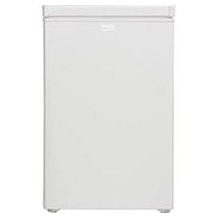
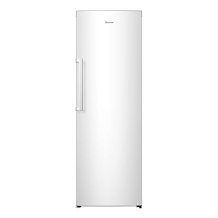
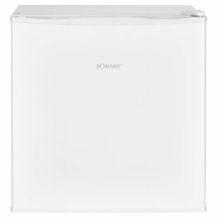
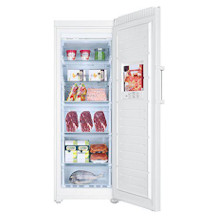
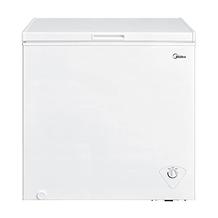
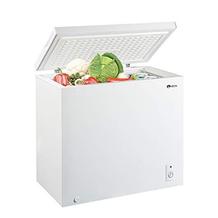
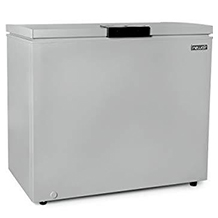
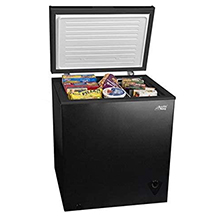
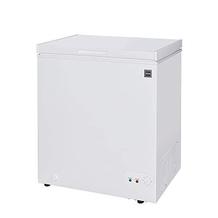
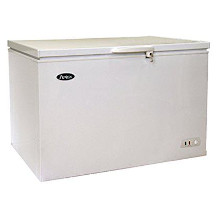

 no reviews
no reviews
